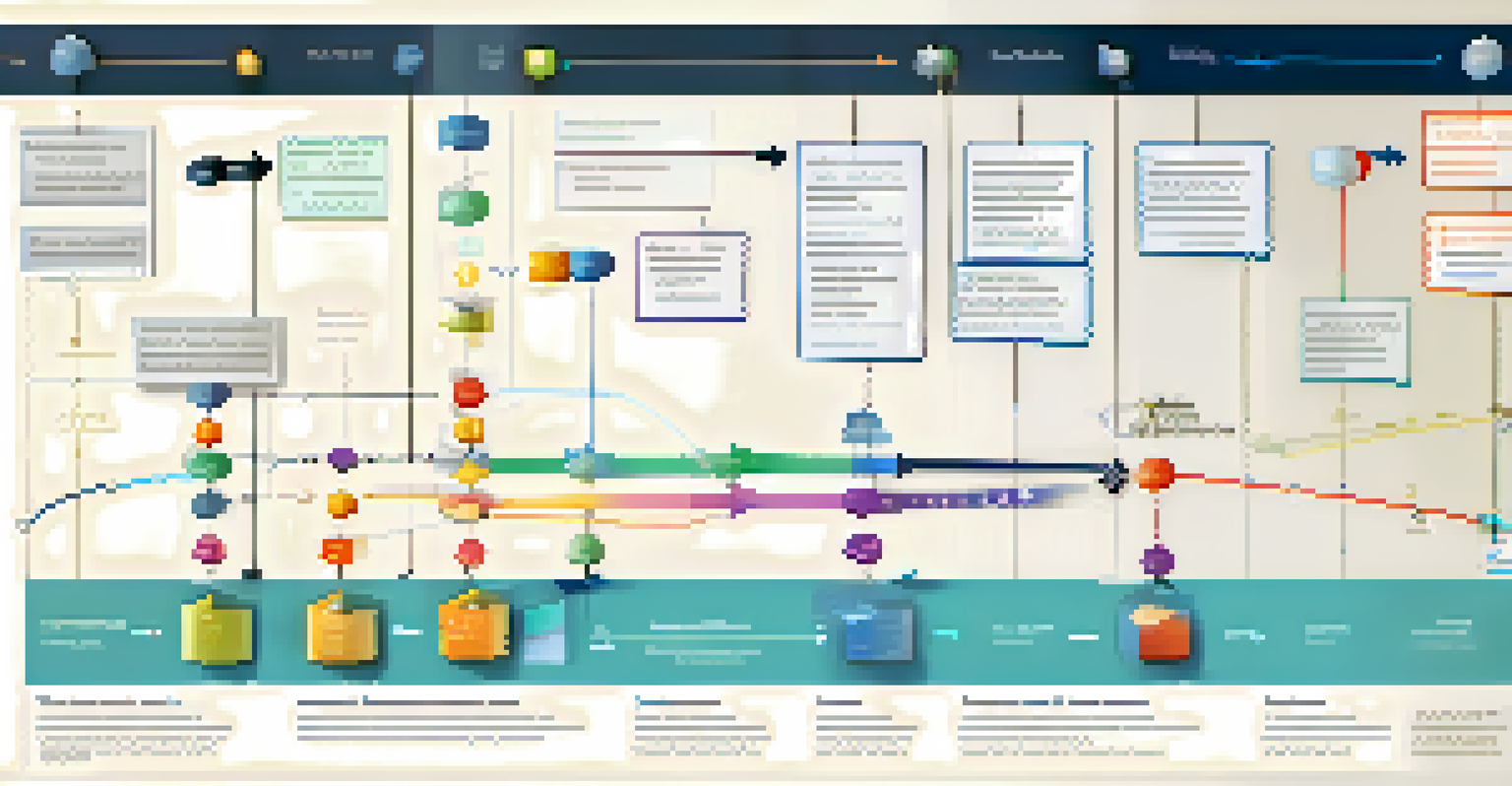Data Catalogs: Enhancing Data Usability and Accessibility

What is a Data Catalog and Why It Matters
A data catalog is a centralized repository that helps organizations manage and understand their data assets. Think of it as a library for data, where each dataset is a book with a description, author, and metadata. This structured approach to data management is crucial in today’s data-driven world, where the sheer volume of information can be overwhelming.
In the world of data, understanding what you have is just as important as what you do with it.
By providing clear definitions and contexts for each dataset, data catalogs enhance usability for data analysts and non-technical users alike. They empower employees across various departments to find and utilize data effectively, leading to better decision-making and innovation. Just like a well-organized library makes it easy to find the right book, a data catalog simplifies access to datasets.
Moreover, as organizations grow, so does their data inventory. Without a data catalog, it’s easy to lose track of valuable data assets. A data catalog not only organizes this data but also ensures that it is accessible, fostering a culture of data-driven insights and collaboration.
Key Features of Effective Data Catalogs
Effective data catalogs come with several key features that enhance user experience and data accessibility. Features such as data lineage, which tracks the origin and lifecycle of data, help users understand the context and reliability of the information. This transparency builds trust and encourages the responsible use of data within the organization.

Another important feature is the inclusion of metadata, which provides essential details about the data’s content, format, and any associated business rules. This information is crucial for users to evaluate if a dataset meets their needs. Think of metadata as the summary and keywords of a book; it gives you a quick insight into what you can expect.
Data Catalogs as Data Libraries
Data catalogs act as centralized repositories, making it easier for organizations to manage and access their data assets.
Additionally, many data catalogs offer search and filtering capabilities, allowing users to quickly find relevant datasets. This functionality is akin to using an online search engine, where typing in keywords can lead you directly to the information you need, saving time and increasing productivity.
How Data Catalogs Enhance Data Usability
Data usability refers to how easily data can be accessed, understood, and used. Data catalogs greatly enhance usability by providing a user-friendly interface that demystifies complex data structures. For instance, visualizations and dashboards can be integrated into the catalog, allowing users to interact with the data intuitively.
Data is a precious thing and will last longer than the systems themselves.
Additionally, data catalogs often include tools for data profiling and quality assessments. These tools help users identify data anomalies or gaps, ensuring they work with high-quality information. Imagine trying to bake a cake with expired ingredients; having a robust data catalog helps ensure your 'ingredients' are fresh and reliable.
By making data more understandable and accessible, organizations can foster a more data-savvy culture. Employees become more confident in using data for their projects, leading to innovative solutions and improved outcomes, ultimately driving business success.
Improving Data Accessibility with Data Catalogs
Improving data accessibility means ensuring that the right people can access the right data at the right time. Data catalogs play a crucial role in this process by centralizing data assets and providing controlled access based on user roles. This tailored approach allows organizations to maintain data security while empowering users.
Furthermore, data catalogs often support self-service analytics, meaning users can explore and analyze data on their own without needing constant IT assistance. This empowerment is similar to having a map on a hiking trip; it allows you to explore your surroundings confidently without always needing a guide.
Enhancing Collaboration and Usability
Effective data catalogs promote collaboration and usability, allowing teams to share insights and access data independently.
By enabling users to find and access data independently, organizations can reduce bottlenecks and enhance overall efficiency. This not only speeds up project timelines but also encourages innovative thinking, as employees can experiment with data freely.
The Role of Collaboration in Data Catalogs
Collaboration is key when it comes to making the most of data catalogs. Many modern data catalogs are equipped with features that facilitate teamwork, such as commenting and annotation capabilities. This allows users to share insights and ask questions directly within the catalog, fostering a collaborative environment.
Imagine a group project where everyone can contribute their thoughts and findings in real-time; this is what collaboration in data catalogs enables. By breaking down silos, organizations can leverage the collective knowledge of their teams, leading to richer insights and more comprehensive analyses.
Additionally, collaboration helps in maintaining the catalog itself. Users can suggest updates or flag issues with datasets, ensuring the catalog remains accurate and relevant. This continuous feedback loop enhances the overall usability and reliability of the data catalog.
Challenges and Best Practices for Implementing Data Catalogs
Implementing a data catalog is not without its challenges. Common hurdles include data integration from various sources, ensuring data quality, and securing user buy-in. Without addressing these issues, the catalog may become an underutilized resource rather than a powerful tool for data management.
One best practice is to start small by focusing on a specific department or use case before scaling up. This allows organizations to learn from initial implementations and refine their approach. Think of it like testing a new recipe; starting with a smaller batch can help you perfect the dish before serving it to a larger group.
Future of Data Catalogs
As data grows, data catalogs will evolve with AI to streamline data discovery, improve compliance, and enhance organizational agility.
Additionally, ongoing training and support for users are essential for successful adoption. Providing resources and workshops can help employees feel more comfortable using the catalog, leading to higher engagement and more effective data utilization.
The Future of Data Catalogs in Organizations
As data continues to grow exponentially, the role of data catalogs will become even more critical in organizations. With advancements in artificial intelligence and machine learning, we can expect data catalogs to evolve, offering more automated features for data discovery and classification. This means users will spend less time searching and more time analyzing data.
Furthermore, as data privacy regulations become stricter, data catalogs will play a vital role in maintaining compliance. By providing clear visibility into data usage and lineage, organizations can demonstrate accountability and transparency, which is increasingly important in today’s regulatory environment.

Ultimately, the future of data catalogs looks bright, with the potential to transform how organizations manage and leverage their data. By embracing these tools, businesses can ensure they remain agile and competitive in an ever-changing data landscape.